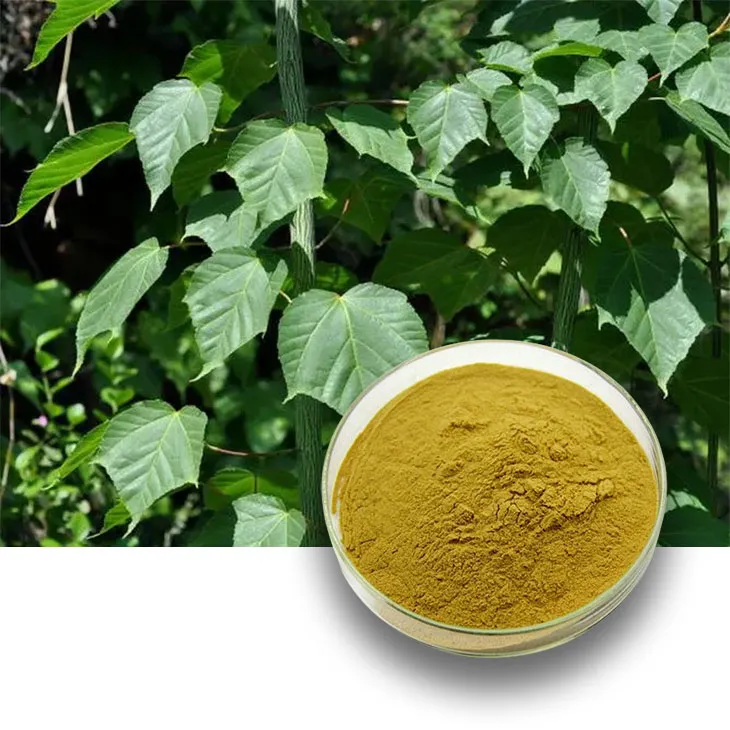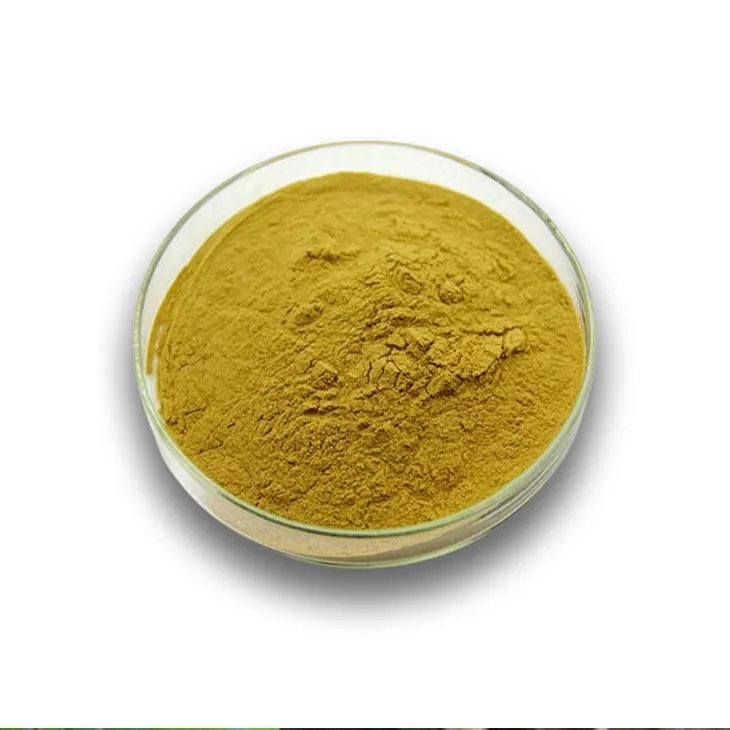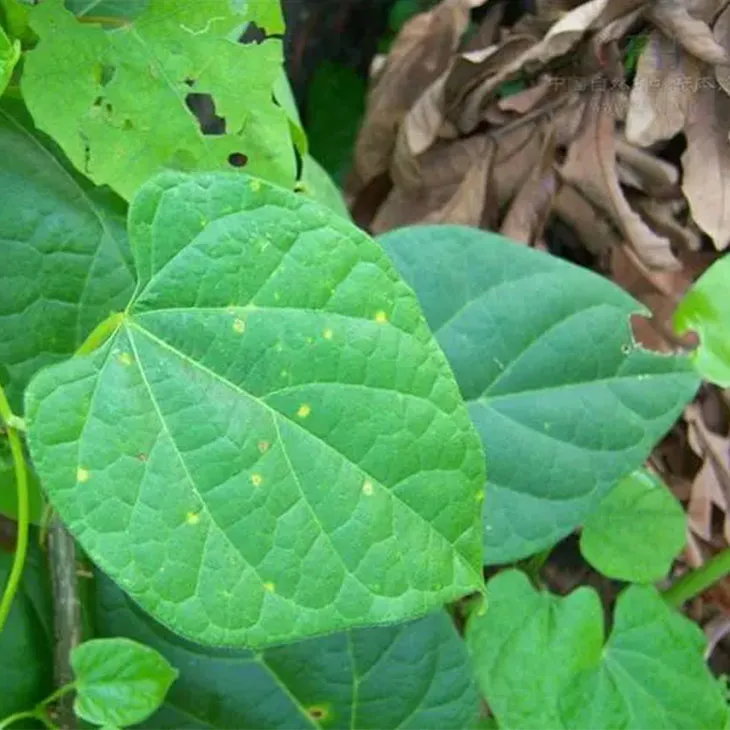- 0086-571-85302990
- sales@greenskybio.com
The Optimal Method for Extracting Tinospora cordifolia Extract.
2024-11-27

1. Introduction
Tinospora cordifolia, a well - known medicinal plant in traditional medicine systems, contains a variety of bioactive compounds. Extracting these valuable compounds efficiently and with high quality is of great significance for various applications such as pharmaceuticals, nutraceuticals, and cosmeceuticals. This article aims to comprehensively analyze the extraction methods of Tinospora cordifolia extract, considering different factors like solvents, extraction durations, and temperatures to achieve the highest yield and quality.

2. Solvents for Extraction
2.1. Water
Water is a commonly used solvent for extracting Tinospora cordifolia extract. It is a safe, inexpensive, and environmentally friendly option. Water extraction can be carried out through methods such as decoction and maceration. Decoction involves boiling the plant material in water for a certain period. For example, the plant parts can be boiled in water for about 30 - 60 minutes. Maceration, on the other hand, requires soaking the plant material in water for an extended period, usually several hours to days. However, water extraction may not be very effective in extracting some lipophilic compounds.
2.2. Ethanol
Ethanol is another popular solvent. It has the ability to dissolve a wide range of compounds, both hydrophilic and lipophilic. Ethanol - based extractions can be performed at different concentrations. For instance, a 70% ethanol solution is often used. Ethanol extraction can be carried out using Soxhlet extraction, where the plant material is continuously refluxed with ethanol. The extraction time may range from a few hours to overnight. Compared to water, ethanol can extract more bioactive compounds effectively, but it also requires more careful handling due to its flammability.
2.3. Other Solvents
- Methanol can also be used as a solvent. It has similar properties to ethanol in terms of compound solubility. However, methanol is more toxic, so special safety precautions need to be taken during extraction.
- Hexane is a non - polar solvent mainly used for extracting lipophilic compounds. It can be used in a two - step extraction process, first with hexane to extract lipids and then with a more polar solvent to extract other compounds.
- Chloroform - methanol mixtures are sometimes used in research settings for more comprehensive extraction of different types of compounds. But chloroform is a hazardous chemical, and proper safety measures are essential.

3. Extraction Duration
3.1. Short - Duration Extractions
Short - duration extractions, such as those lasting less than an hour, are suitable for extracting some volatile and heat - sensitive compounds. For example, in a microwave - assisted extraction method, a short exposure time of 10 - 30 minutes can be used. This method can quickly heat the solvent and plant material, promoting the extraction of certain compounds. However, for a more comprehensive extraction of all the bioactive compounds in Tinospora cordifolia, short - duration extractions may not be sufficient.
3.2. Medium - Duration Extractions
Medium - duration extractions, typically ranging from 1 - 4 hours, are often used in Soxhlet extraction with ethanol or other solvents. During this time, the solvent can continuously dissolve the compounds from the plant material. This duration allows for a balance between efficient extraction and minimizing the degradation of some compounds. For instance, in a Soxhlet extraction with 70% ethanol, 2 - 3 hours may be an optimal time frame for extracting a good amount of bioactive compounds from Tinospora cordifolia.
3.3. Long - Duration Extractions
Long - duration extractions, which can last for several days, are mainly used in maceration methods. When using water or a less polar solvent for maceration, leaving the plant material in the solvent for an extended period can ensure that a maximum amount of compounds are extracted. However, long - duration extractions also increase the risk of microbial growth and degradation of some compounds, especially in aqueous solutions. Therefore, proper sterilization and preservation techniques need to be employed.

4. Extraction Temperatures
4.1. Low - Temperature Extractions
Low - temperature extractions, usually carried out below 50°C, are beneficial for extracting heat - sensitive compounds. For example, in cold - press extraction methods, the plant material is pressed at low temperatures to extract oils or other compounds. This method can preserve the integrity of some thermally unstable compounds. However, low - temperature extractions may be less efficient in terms of overall yield compared to higher - temperature extractions.
4.2. Moderate - Temperature Extractions
Moderate - temperature extractions, in the range of 50 - 100°C, are commonly used in decoction and some Soxhlet extractions. At these temperatures, the solubility of many compounds in the solvent increases, leading to a higher extraction yield. For instance, when boiling Tinospora cordifolia in water for decoction at around 80 - 100°C, a significant amount of water - soluble compounds can be extracted. However, care should be taken to avoid over - heating, which may cause the degradation of some compounds.
4.3. High - Temperature Extractions
High - temperature extractions, above 100°C, can be achieved using methods such as autoclaving or superheated solvent extraction. These methods can break down the plant cell walls more effectively, releasing more compounds. However, high - temperature extractions are also more likely to cause the degradation of some heat - sensitive bioactive compounds. Therefore, they are mainly used for extracting compounds that are relatively stable at high temperatures.

5. Optimization of Extraction Parameters
To achieve the highest yield and quality of Tinospora cordifolia extract, it is necessary to optimize the extraction parameters. This can be done through experimental design methods such as response surface methodology (RSM). RSM can help in determining the optimal combination of solvent, extraction duration, and temperature. For example, a study may be designed to test different levels of ethanol concentration (e.g., 50%, 70%, 90%), extraction durations (e.g., 1, 2, 3 hours), and temperatures (e.g., 60°C, 80°C, 100°C). By analyzing the data obtained from these experiments, the optimal extraction conditions can be identified.
6. Conclusion
In conclusion, the extraction of Tinospora cordifolia extract is a complex process that depends on multiple factors including solvents, extraction durations, and temperatures. Different solvents have different solubilities for various bioactive compounds. The choice of extraction duration should balance the complete extraction of compounds and the prevention of degradation. Temperatures also play a crucial role in determining the extraction efficiency and the quality of the extract. By carefully optimizing these parameters through scientific methods such as response surface methodology, it is possible to obtain Tinospora cordifolia extract with the highest yield and quality, which can then be further utilized in various fields for its medicinal and other beneficial properties.
FAQ:
What are the common solvents used for extracting Tinospora cordifolia extract?
Common solvents for extracting Tinospora cordifolia extract include ethanol, methanol, water, and their combinations. Ethanol is often preferred as it can effectively dissolve the active compounds in Tinospora cordifolia while being relatively safe and easy to handle. Methanol can also be used but requires more careful handling due to its toxicity. Water extraction is a more natural and environmentally friendly option, but it may not be as efficient in extracting all the desired components compared to organic solvents.
How does extraction duration affect the yield and quality of Tinospora cordifolia extract?
The extraction duration plays a crucial role. Longer extraction times may initially increase the yield as more of the active compounds have time to dissolve into the solvent. However, after a certain point, extended extraction may lead to the extraction of unwanted substances or degradation of the active compounds, which can affect the quality. Shorter extraction times may not allow for complete extraction of all the valuable components. Finding the optimal extraction duration often requires experimentation and may vary depending on factors such as the solvent used, the particle size of the Tinospora cordifolia material, and the extraction temperature.
What is the influence of extraction temperature on the extraction of Tinospora cordifolia extract?
Extraction temperature can significantly impact the extraction process. Higher temperatures generally increase the solubility of the active compounds in the solvent, which can lead to a higher yield. However, excessive heat can also cause the degradation of heat - sensitive compounds present in Tinospora cordifolia. Lower temperatures may result in slower extraction rates and potentially lower yields. Therefore, a balance needs to be struck. Mildly elevated temperatures are often preferred to achieve a good compromise between yield and maintaining the integrity of the active compounds.
Are there any modern techniques that can improve the extraction of Tinospora cordifolia extract?
Yes, there are several modern techniques. For example, ultrasound - assisted extraction can enhance the extraction efficiency. The ultrasonic waves create cavitation bubbles in the solvent, which helps in breaking the cell walls of Tinospora cordifolia more effectively, allowing for better release of the active compounds. Supercritical fluid extraction, typically using carbon dioxide as the supercritical fluid, is another advanced method. It offers advantages such as high selectivity, low environmental impact, and the ability to operate at relatively mild conditions, which can be beneficial for extracting high - quality Tinospora cordifolia extract.
How can we ensure the quality of Tinospora cordifolia extract during the extraction process?
To ensure the quality during extraction, several steps can be taken. Firstly, the starting material of Tinospora cordifolia should be of high quality, properly sourced and identified. The extraction parameters such as solvent selection, temperature, and duration should be optimized based on scientific research. Monitoring the extraction process, for example, by analyzing the chemical composition of the extract at different stages, can help in adjusting the parameters if needed. Additionally, proper purification and filtration steps after extraction are essential to remove any impurities or unwanted substances, thus ensuring a high - quality final extract.
Related literature
- Optimization of Extraction Conditions for Tinospora cordifolia Bioactive Compounds"
- "Comparative Study of Different Solvent Extractions of Tinospora cordifolia"
- "The Role of Temperature in Tinospora cordifolia Extract Production"
- ▶ Hesperidin
- ▶ citrus bioflavonoids
- ▶ plant extract
- ▶ lycopene
- ▶ Diosmin
- ▶ Grape seed extract
- ▶ Sea buckthorn Juice Powder
- ▶ Beetroot powder
- ▶ Hops Extract
- ▶ Artichoke Extract
- ▶ Reishi mushroom extract
- ▶ Astaxanthin
- ▶ Green Tea Extract
- ▶ Curcumin Extract
- ▶ Horse Chestnut Extract
- ▶ Other Problems
- ▶ Boswellia Serrata Extract
- ▶ Resveratrol Extract
- ▶ Marigold Extract
- ▶ Grape Leaf Extract
- ▶ blog3
- ▶ blog4
-
The best olive leaf extract in nature.
2024-11-27
-
Cordyceps extract suppliers.
2024-11-27
-
Chinese aguaje extract powder manufacturers.
2024-11-27
-
Honeysuckle pollen of the best quality.
2024-11-27
-
Chinese Senna Leaf Extract Suppliers.
2024-11-27
-
Organic Dandelion Root Extract, Australia.
2024-11-27
-
The best bitter gourd extract in 2024.
2024-11-27
-
The best baicalin in nature.
2024-11-27
-
Chinese lily extract manufacturers.
2024-11-27
-
Elderberry Extract
2024-11-27
-
Yam Extract
2024-11-27
-
Citrus Aurantium Extract
2024-11-27
-
Artichoke Leaf Extract
2024-11-27
-
Oat Straw Extract Powder
2024-11-27
-
Red Date Extract
2024-11-27
-
Grape Leaf Extract
2024-11-27
-
Almond Extract Powder
2024-11-27
-
Kelp Extract Powder
2024-11-27
-
Polygonum Cuspidatum Extract
2024-11-27





















